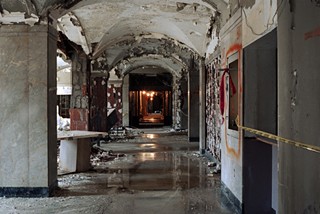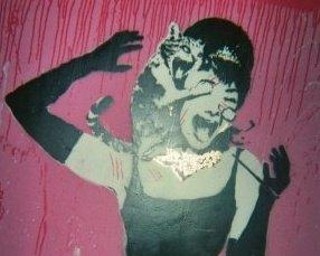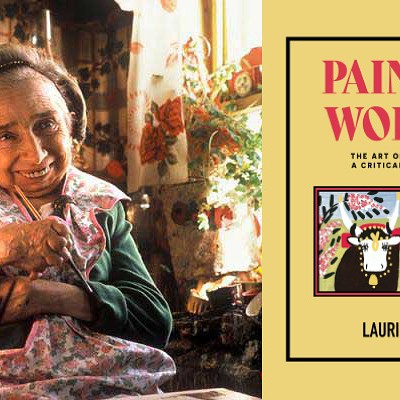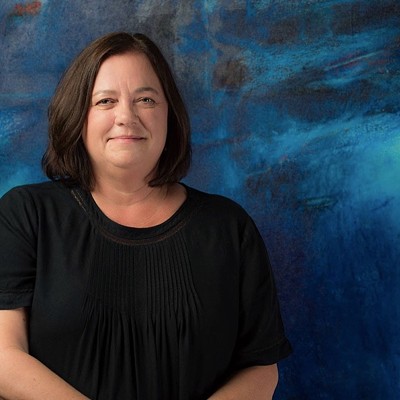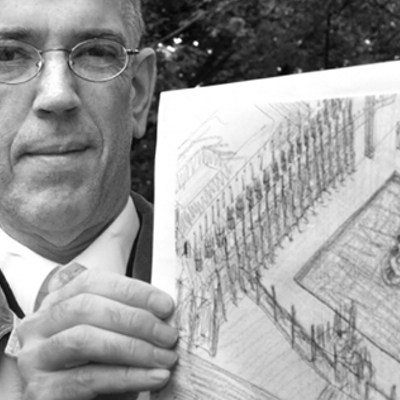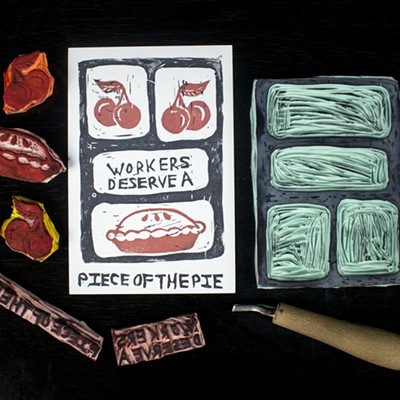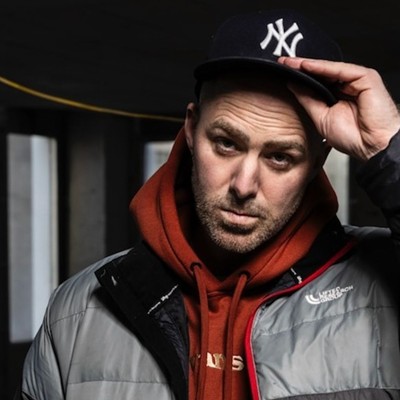Angela Carlsen is wearing a hardhat, bodysuit and steel-toed boots, preparing for a moment she's been anticipating for months. Entering the abandoned Halifax Infirmary has become an unshakeable obsession of hers. She's stared longingly at the infirmary for days, while working at her day job at Atlantic News. She pleaded with the head of the demolition crew, until he finally agreed to escort her through the building.
"As soon as I walk in the door it's kind of overwhelming, I don't know where to start," says Carlsen, who recalls feeling a mixture of "depression, nostalgia and excitement" upon entering the building, which has since been demolished.
The derelict infirmary appears swamp-like and cavernous. The ground is covered with rubble, and green slime spreads across the walls. Carlsen stands in the middle of the wreckage, trigger happy and taking photo after photo. "It started out as something completely selfish. I just wanted to see the inside and then when people saw those photographs they liked it as much as I did," she says.
Carlsen, who was actually born in the old infirmary herself, is hanging her latest photography exhibition, No Vacancy: A Disappearing History, at ViewPoint Gallery. The friendly, down-to-earth NSCAD graduate wears her hair in pigtails and her chest is emblazoned with two colourful shrunken-head tattoos.
In her latest work, she documents the latent beauty found in five of Nova Scotia's dilapidated and abandoned buildings: the Halifax Infirmary, St. Joseph's Church, Greenvale School, the Dartmouth Marine Slips and the former Chronicle-Herald building. Carlsen resists the trend of photographing abandoned structures in black and white, opting for intensely saturated digital images instead.
"I want this to be very full of light and very colourful. It's still there. It's still existing, it's just taken on a new form."
The images are bursting with unexpected life: Moss so green, it looks toxic, carpets the infirmary floor, peeling Pepto Bismol-pink paint drifts across cracked walls and corrugated hoses twist like snakes in a ramshackle concrete room. Carlsen adheres to the Japanese view of Wabi-sabi, which holds that beauty lies in imperfection and transience.
"A lot of people see this stuff as eyesores," she says. "Yeah, it's not nice to look at. It's not a pretty building. It's run down, but you can appreciate that...You can look at it differently." She thinks like an archaeologist when she shoots, searching for signs of lost life: "I'm trying to find things that are attractive and will also tell something about the fact that there were people there, such as scrawling on the wall or furniture," she says. "I'm looking for evidence that there were desks there, impressions in the carpet that show that there was actual furniture there."
Carlsen is also motivated by a sense of voyeurism. "I love looking at people's windows at night!" she laughs. "When their lights are on and you're driving by at night you want to see how they decorate and what they do. It's kind of the same thing, you get to go inside a place that's forbidden.
"The most interesting thing that I realize when I go to these places is that I'm not the first one." She often saw leftover signs of squatters.
The element of voyeurism is markedly strong in Carlsen's previous collection, in which she spent four years traipsing through abandoned houses with her current boyfriend, photographing the surprising remains. Some of her best finds included a house that had been taken over by skateboarders and sheep, and a home that a fortune teller had converted into his headquarters. Her next project promises to be equally bizarre---she'll be photographing study-skins of birds at the Museum of Natural History.
"They're just made for study, so their eyes are white cotton," she explains. "They actually have a flamingo and his neck is curved down and laying on his chest and his feet are tied up and he's just gorgeous."
As with all her work, Carslen is drawn to these eyeless stuffed birds on an intuitive level. "I'm looking for anything that makes me go, 'Oh god that's it!' It's a feeling more than something specific."
Angela Carlsen's No Vacancy until August 2 at ViewPoint Gallery, 1272 Barrington. Artist talk Sunday, July 12 at 2pm.

